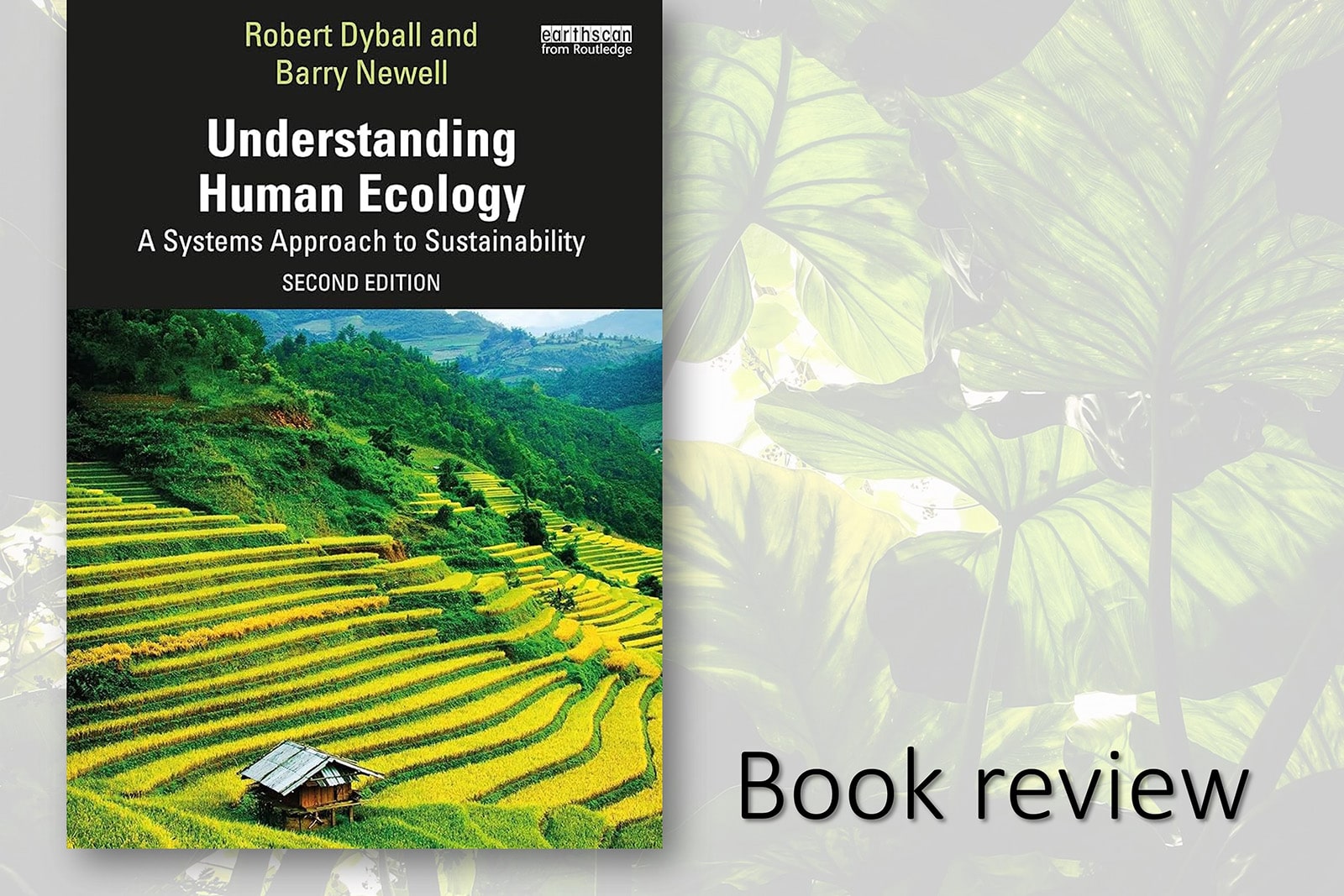
By Agnessa Spanellis
As an academic with Systems Thinking in my title and teaching systemic approaches to sustainability, I receive a lot of invitations to order an inspection copy of books that have something to do with systems, sustainability, climate change, etc. Understanding Human Ecology: A Systems Approach to Sustainability by Robert Dyball and Barry Newell caught my attention with a premise to address all of those.
This book is the second edition, published by Routledge in 2023. The main thesis of the book is that you need to start looking at humans and nature as an integrated whole, rather than two separate entities. This might sound like common sense to some readers, but the book is taking you on a journey of rationalising this argument by showing interdependencies between humans and nature in ecosystems. The book starts with a description of a fragile ecosystem in a part of Australia and the wide ranging implications of tipping it off balance. It then introduces methodological repertoire for analysing such systems. The book quite quickly becomes rather technical and focuses a lot on concepts and terminology necessary to model complex ecosystems using system dynamics in order to understand their patterns of behaviour.
The book covers fundamentals of system dynamics and describes briefly different types of dynamics in complex systems. However, you will most probably be able to follow it only if you already know the very basics of system dynamics. If you are new to the field, you will be better off with the foundational book of Donella Meadows, Thinking in Systems. But you will certainly learn something new about interconnectivity in complex ecosystems from this book. The authors uncover it in a very interesting way. They introduce The Cheddar Man, whose remains were uncovered in Cheddar Gorge, Somerset, and were dated to 9000 years ago, and whose DNA was traced to a direct living descendant living in the same area. The authors then ask you to imagine his descendants living in the time of evolution of agriculture and then urban development. They describe paradigmatic shifts that happen in human's relationship with nature. Of course, they oversimplify how such paradigmatic shifts came about, but it is inevitable when building a model. They discuss the consumption patterns, energy demands and changes in carrying capacity of land, and how all these trickle down to impact ecosystems' health and then human health. Such a systemic view of the evolution of our relationship, or more precisely, increasing detachment from nature, highlights things we might have never thought about. For instance, with the rise of global food supply chains, the nutrients captured in produce in one place, are consumed and returned to the environment elsewhere, leading to continuous depletion and redistribution of nutrients around the world.
To conclude, if you are looking for a textbook to learn about the fundamentals of systems thinking or system dynamics more specifically, this book is not for you. If you are looking for a book that applies a systemic approach to complex dynamic ecosystems, this book might make for an interesting read.

Agnessa Spanellis
Lab Director, and Senior Lecturer in Systems Thinking at the University of Edinburgh Business School